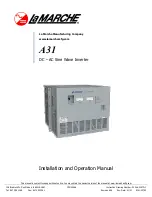
8
9
INSTALLATION AND OPERATION MANUAL SOLAR MODULES GENERATION 4 (G4.1) – HANWHA Q CELLS AUSTRALIA PTY LTD – EN
INSTALLATION AND OPERATION MANUAL SOLAR MODULES GENERATION 4 (G4.1) – HANWHA Q CELLS AUSTRALIA PTY LTD – EN
2 PLANNING
2.3 Mounting options
Specifications
MODULE TYPE
MOUNTING
OPTION
CLAMPING AREA
1
[MM]
ALLOWED STATIC
LOAD² [PA]
TEST-LOAD IN
ACC. IEC 61215
PUSH/PULL [PA]
Q.PRO-G4.1
Q.PLUS-G4.1
CL1
Push
250 - 350
2700
5400/4000
>350 - 450
1900
Pull
250 - 450
2400
CL1 extended
(min. 20 mm)
Push
250 - 350
3600
>350 - 450
3300
Pull
250 - 450
2400
CL3
Push
250 - 450
3300
5400/4000
Pull
250 - 450
2400
CL4
Push
0 - 300
1350
2400/2400
Pull
0 - 300
1200
FB1
Push
345
2200
5400/4000
Pull
345
2800
FB2
Push
345
3200
5400/4000
Pull
345
2800
IP1
Push
-
3200
5400/4000
Pull
-
3000
IP2
Push
-
1350
2400/2400
Pull
-
1200
CL5 hybrid
clamping
Push
300 - 400
2700
2400/2400
Pull
300 - 400
2700
CL2 without
substructure
support
Push
0 - 100
1200
2400/2400
Pull
0 - 100
1100
1
Distance between outer edge of module and middle of the clamp.
² Describes the maximum module surface load (vertical to the module surface) regarding safety factors (e.g. EUROCODE). For
this purpose, the load value determined by load tests according to various criteria: laminate overlay, plastic deformation, module
failure, and were divided with a safety factor. The minimum calculated load value corresponds to the maximum permitted load.
MOUNTING OPTION CL1
Ä
Ensure, that the subconstruction does not run below the junction box.
Ä
Ensure, that the connection cables of the junction box don‘t run between laminate and substructure.
MOUNTING OPTION CL1 EXTENDED
Ä
Ensure, that there’s distance of minimum 45 mm between laminate backside and subconstruction respectively
that the distance between module frame backside and substructure is minimum 20 mm.
Ä
Ensure, that the connection cables of the junction box don‘t run between laminate and substructure.
MOUNTING OPTION CL4
Ä
Ensure, that the subconstruction runs exactly below the frame, not below the laminate (module less frame).
MOUNTING OPTIONS FB1 AND FB2
Ä
Ensure, that the connection cables of the junction box don‘t run between laminate and substructure.
•
Use M8 corrosion-proof screws and washers (diameter 16 mm).
Module Selection
For detailed key electrical data, please refer to the actual
data sheet referring to the relevant Module (available at
www.q-cells.com).
Ä
Only connect modules of the same type and power
class.
Safety Factor
During normal operation, a module may generate a greater
current and / or higher voltage than that determined under
standardised test conditions. Please use a safety factor of
1.25 for the following:
•
Calculating the voltage measurement values (V
oc
) of
components
•
Calculating the current measurement values (I
SC
) of
conductors
•
Sizing of control systems connected to the outlets of
the solar modules
Ä
Please follow the valid national guidelines for the
installation of electrical systems.
Ä
Please refer to the latest revision of AS/NZS 5033
(including all relevant amendments) and the Clean
Energy Council Guidelines (for Australia).
Series Connection
Connection of modules in series is only permitted up to
the maximum system voltage as listed in the applicable
data sheet of all the relevant modules to be installed.
Ä
Take into account all possible operating situations and all
relevant technical norms and regulations when designing
the system. It has to be ensured that the maximum
system voltage, including all necessary safety margins,
is not exceeded.
Ä
Take the voltage limit of the inverter into account when
determining the maximum number of modules in the
string.
Parallel Connection
Modules may be damaged by the occurrence of reverse
currents (caused by module defects, ground leaks, or
defective insulation).
Ä
Ensure that the maximum reverse current load capacity
indicated in the data sheet is met.
In order to limit reverse currents that may occur, we
recommend using the following safety options:
1) Layout with a limited number of parallel connected
strings :
Please refer to the latest revision of AS/NZS 5033
(including all relevant amendments) for parallel string
overcurrent protection requirements.
2) Layout with string fuses :
place fuses for each string of modules at the plus and
minus ends. Observe the maximum permitted number
of strings as indicated in the specifications provided by
the respective string fuse manufacturer and the technical
guidelines.
NOTE!
When installing different product versions, the lowest
minimum permitted reverse current load capacity applies.
Inverters
Inverters with or without transformers may be used.
2.4 Electrical layout
2 PLANNING





























